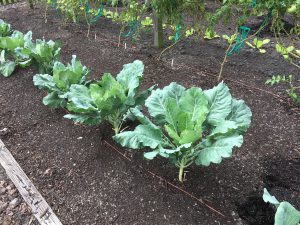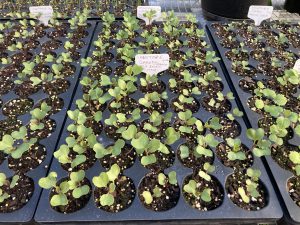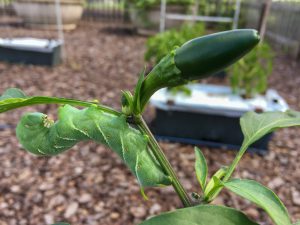For a deep dive into Vegetable Gardening in Central Florida, watch our YouTube of the webinar recording.
Vegetable Gardening in Florida
If you are getting started with growing your own vegetables in Florida, start by reading the Florida Vegetable Gardening Guide, available in English and Spanish. Choose a site that is full sun with access to water. Gardens can be grown in a variety of types of garden beds including in ground, raised bed, grow boxes and grow bags. Vegetables prefer a rich loamy soil so loosen the soil and amend with compost to improve the soil fertility.

Right Plant, Right Time
The main vegetable gardening season in Florida runs from September to May. Choose varieties like Seminole pumpkin, Everglades tomato, and Rattlesnake pole bean that thrive in Florida. Our summers get hot and rainy so many choose to take a break, grow cover crops, or solarize their gardens. There are infographics that show edibles to plant each month. See the entire collection here: https://gardeningsolutions.ifas.ufl.edu/plants/plant-of-the-month/infographics.html

Seed Starting
Root crops and large seeds such as green beans, sunflower, peas and squash are generally direct sewn. Most others such as tomato, pepper, eggplant, broccoli, cabbage, and collards are started in seed flats and transplanted into the garden once the first true leaves appear. It is important to keep the soil moist when germinating seeds and establishing vegetable plants. Some gardeners choose to observe their crops and hand water as needed. Others install microirrigation, drip irrigation or microsprays, on an automatic battery timer. As plants mature, a 2-3” layer of stray mulch can be used to prevent weeds and conserve soil moisture.

Integrated Pest Management
Some vegetables attract a lot of pests. Scout your crops often to check for caterpillars, aphids and other pests. Plant flowers to attract beneficial insects, for example ladybugs eat aphids. If you need to spray, it’s best to use the least toxic pest control method first. Start by scouting for insects and identifying them. If you get a pest outbreak that requires a pesticide spray, use the least toxic options first. For example, Bacillus thuringiensis (or BT) is a biological pesticide that can be used for caterpillar control. Read more about BT and other Natural Pest Controls in this EDIS publication “Natural Products for Managing Landscape and Garden Pests in Florida”.

Have plant questions? Email photos to us at hillsmg@mail.ufl.edu or call our Help Desk at 813-744-5519.
Follow us!
Hillsborough County Extension FFL Facebook
https://www.facebook.com/HCFFL
Tia Silvasy’s UF blogs
https://blogs.ifas.ufl.edu/hillsboroughco/author/tsilvasy/
Hillsborough County Master Gardener Volunteer website
https://sfyl.ifas.ufl.edu/hillsborough/master-gardener-program/
View our upcoming events on Eventbrite: https://www.eventbrite.com/o/ufifas-hillsborough-extension-8606873308
 2
2
